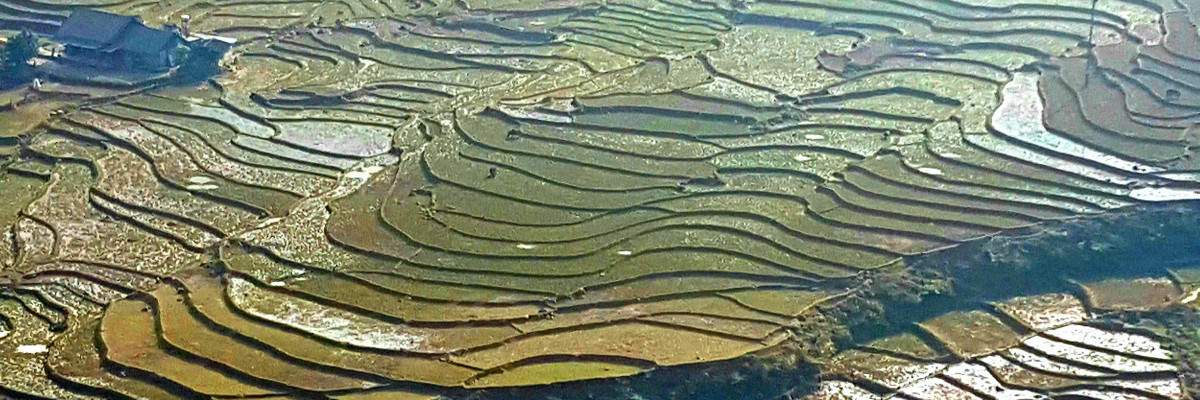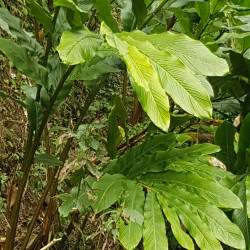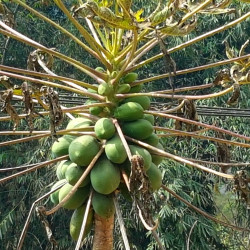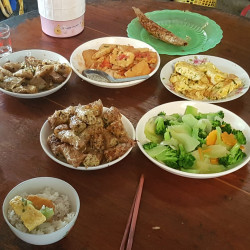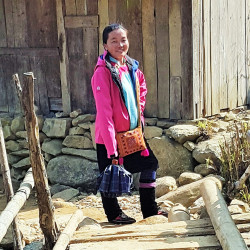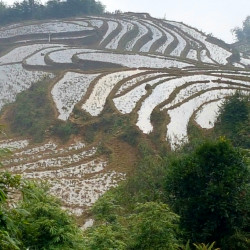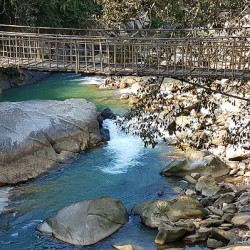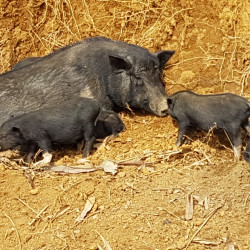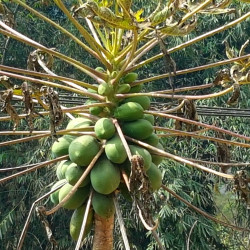We arrived in Sapa from Hanoi on the ‘sleeping bus’. If you have never seen one, try and imagine a bus with three rows of metal framed bunk-beds with some smelly bedding thrown in. It’s a bit like a mobile dormitory, a design which successful manages to be a completely logical, yet illogical, all at the same time.
Sapa is circled by the misty hills of north-west Vietnam. It was once a holiday hill station for the French but these days seems to get bad press for its aesthetic qualities. Perhaps it is touristy / tacky / chaotic but I quite liked the place and when the mist isn’t too thick you can see what a fabulous, mountainous setting it is in. As we walked through the town, we were inundated with women from the hill-tribes of the Muong Hoa valley trying to sell their handicrafts. Buying something, rather than placate their fervour, seems to make them even more determined to extract money from you but luckily for them, charm, humour and determination are the perfect ingredients for selling.
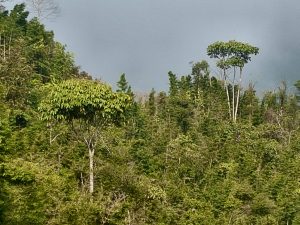
We booked a two day trek with a night in a homestay for $65 each, including all our food. I think this was a reasonable price and seemed to be about the going rate. Our guide, Koo, was short and bright (apparently you can be both). She led us out of the town and up a muddy, slippy hillside. I’m sure you can do this hike without a guide but I really could not see a discernible path through the foliage and, of course, you learn so much more about their lives and lifestyle, as well as providing an essential income doing it this way.
The surrounding hilltops are rounded with sharp, steep edges, like a child’s drawing; the forest which covers them is dense and lush and, on this particular January day, sparred beautifully against the warm grey of the sky. We were offered some fabulous views over the mountains and villages but mist was rising and falling between the peaks so our views came and went.
Koo taught herself English and had an impressive vocabulary of the plant-life which is integral to Hmong peoples existence living from the land. We passed various small crops such as green tea and cardamon, as well as banana trees, coconut, choko, eggplant and of course, the spectacular rice terraces which cover a huge area of the valley.
But it isn’t just the rice terraces which make this area so intriguing, its the perpetual movement, the flow of life and the locals connection with nature and land. As we walked through the villages activity was happening in all corners: People tending crops, children playing around paddy fields, materials/vegetables/livestock being transported (with incredible ingenuity) by moped and bicycle, people fixing motorbikes, selling fresh produce, making handicrafts to flog to tourists; there are buffaloes, goats, cows, pigs, ducks, dogs and chickens often with their young scattered over the roadsides and in among the vegetable plots. It’s a endless flow of activity, like a psychedelic painting where the more you look, ever more detail becomes apparent.
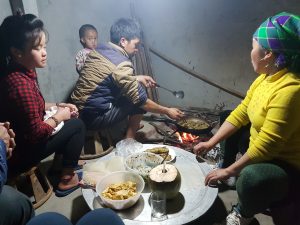
Our homestay was with Koo’s sister and family in the village of Hau Thao. Their house sat on the edge of the settlement next to the huge vegetable plot where the family’s livelihood and most of our dinner came from. Cooking for us over an open fire on the floor of the kitchen, they created a fabulous meal of beans and potato fresh from the veg plot, spring rolls made with rice paper, fried Tofu and rice. We ate together, saying prayers before tucking in which surprised me as I had assumed they were Buddhist, but no – they are Christians, the church a legacy from the Americans. Koo told us that she used to be Shaman but it was costly as matters brought to the spiritual leaders came with a large price-tag of livestock and produce.
While our hosts were cooking dinner over the open fire, the youngest member of the family, a boy of four, played with what appeared to be his one toy (which in fact wasn’t really a toy, but just two bits of plastic he’d learnt to ping off from each other – he found it hilariously funny). There wasn’t a TV, computer games, a room full of playthings or shelves of books. The floors were bare concrete and the walls windowless. Our room was sectioned off from the rest of the house with a wooden partition, the rest of the family slept upstairs in the roof. Without wanting to romanticise poverty, there was something cathartic in this experience – the sparseness, the simplicity; it made me question the ‘clutter’ in my life.
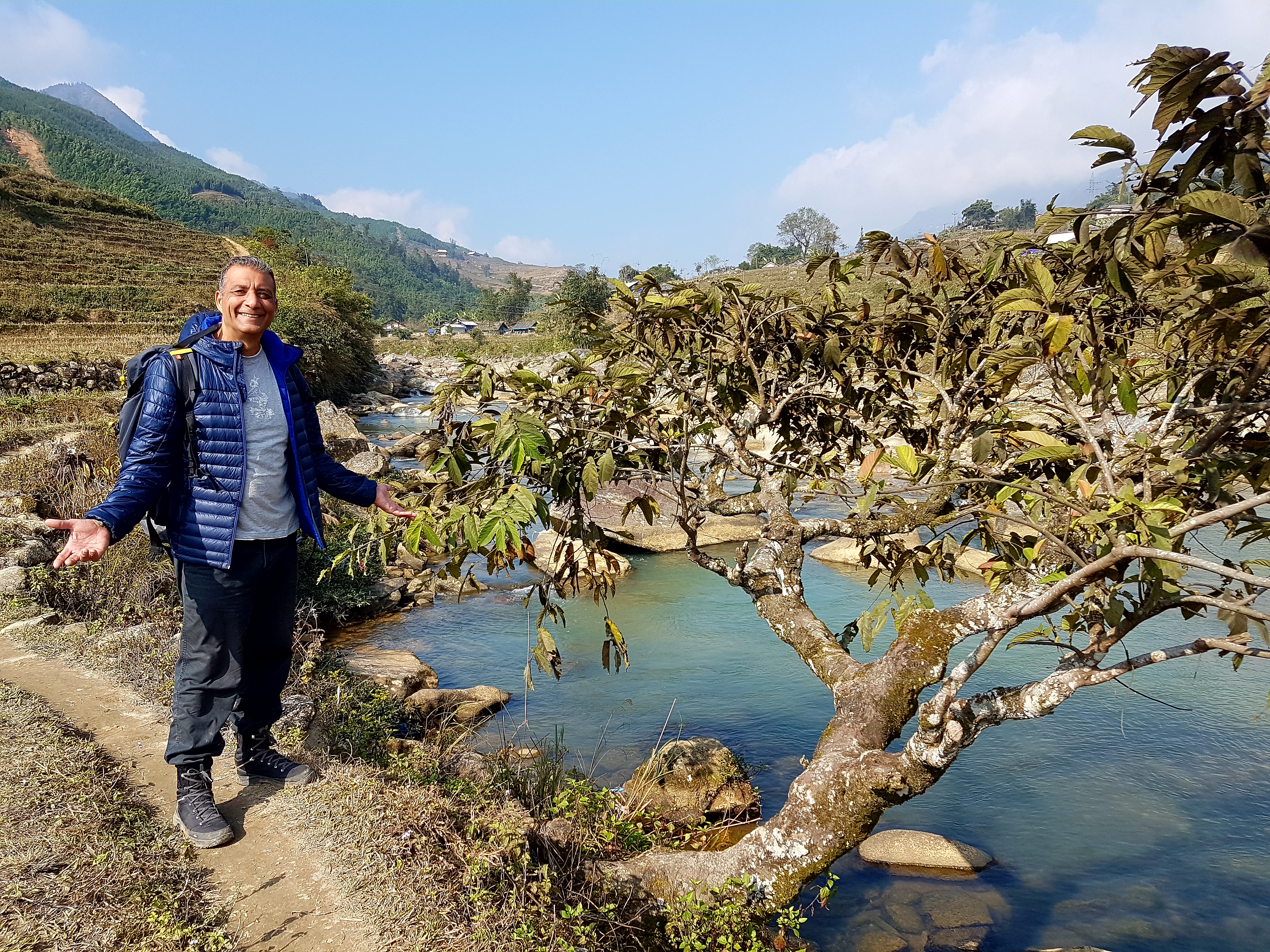
After a cosy night, we had a breakfast of pancakes, honey and last night’s leftovers. It was a clearer, sunnier day and we could see the mountains opposite. Our trek was a lovely relaxed meander down through the busy villages and as it was a Saturday, children were roaming around the paddy fields and rushing over to greet us. The day ended with another superb meal of tofu, egg, rice, cabbage, spring rolls in local women’s kitchen where chickens and ducks strutted in and out.
I took so much away from this experience and while I heard people lament that it is too touristy, it didn’t feel like that in January when we were there. More to the point, it made me think about how I live my life in London – how I consume, how I eat, how I socialise, the community (or lack of it) around me.

